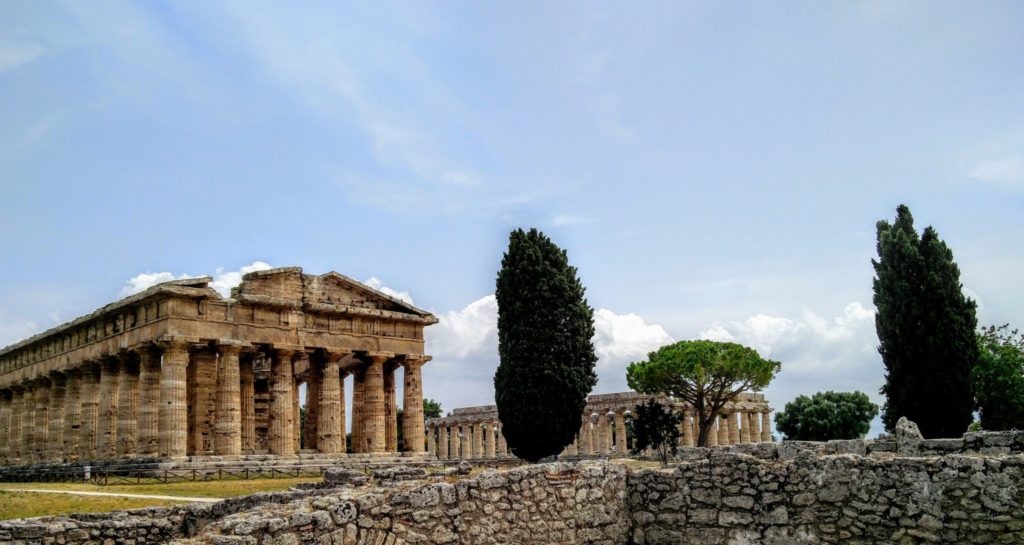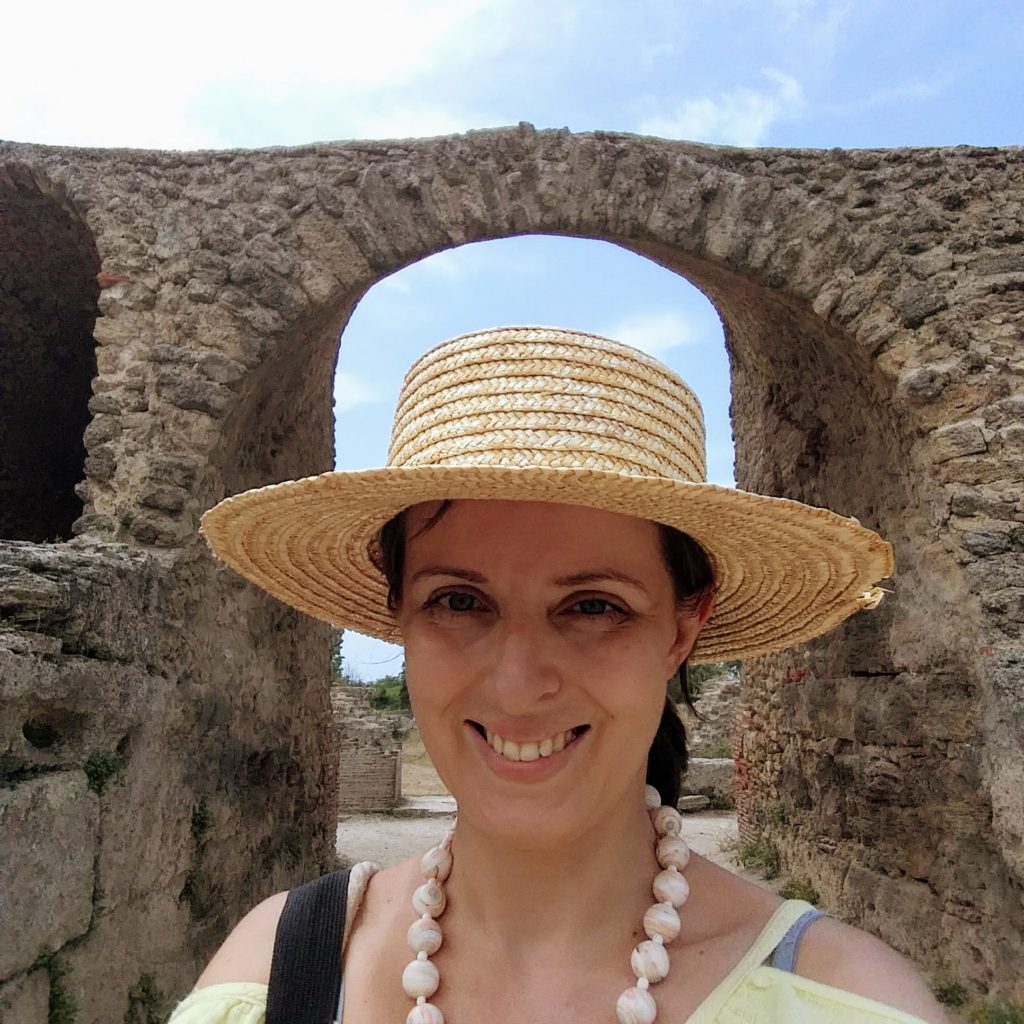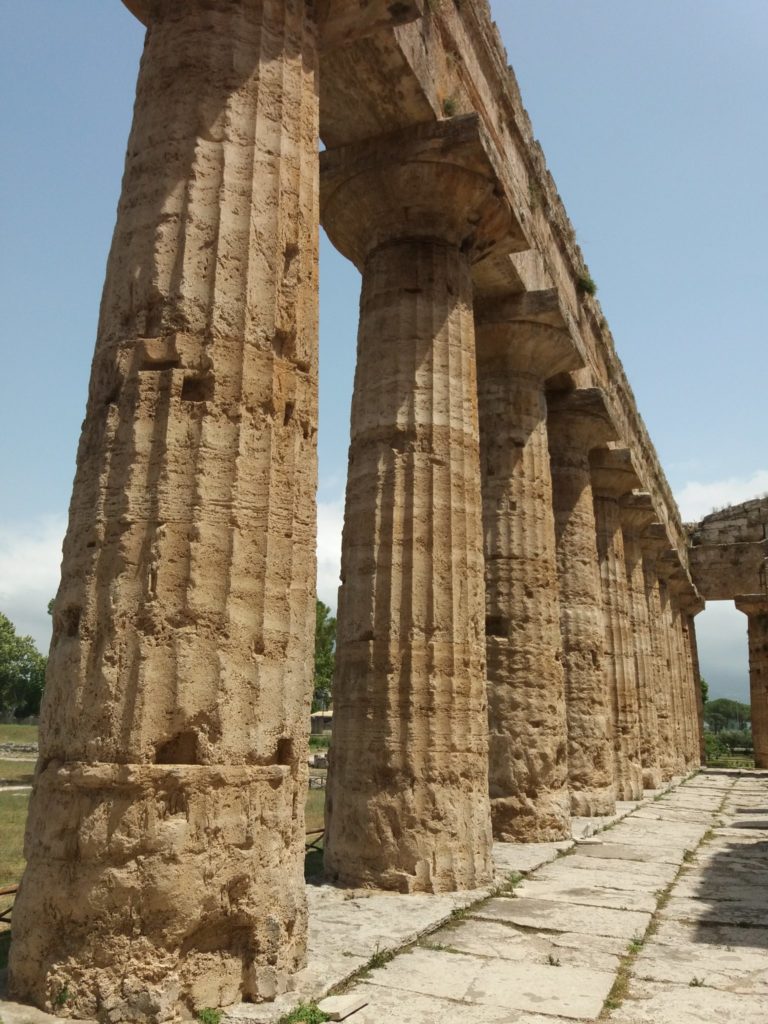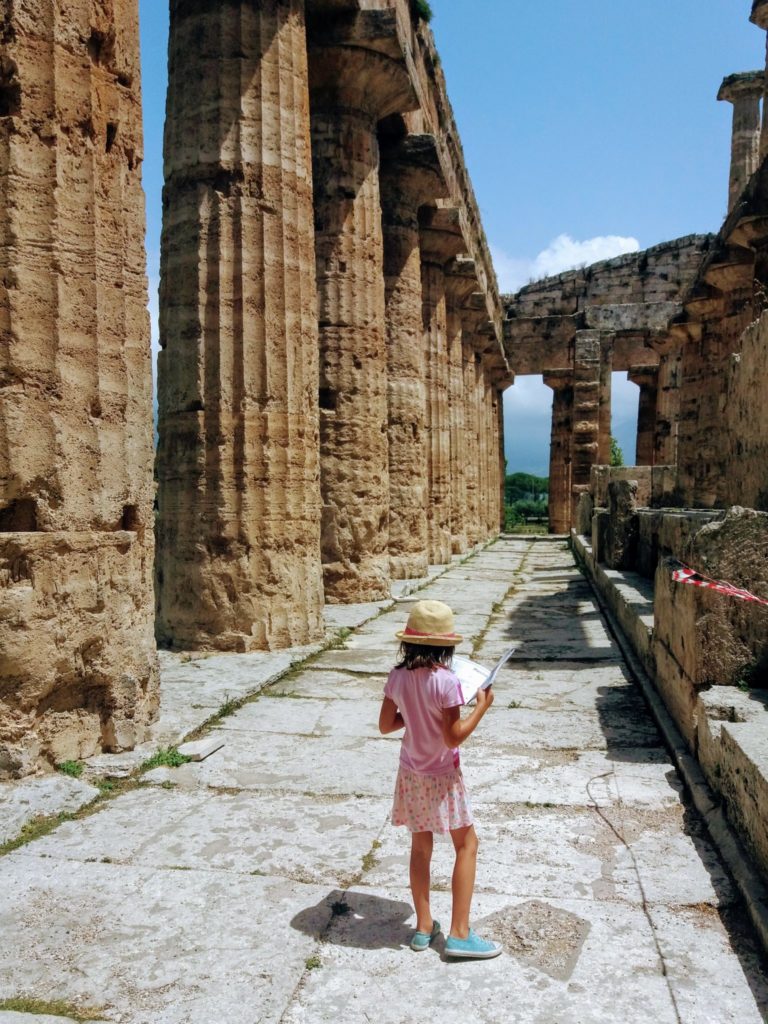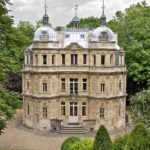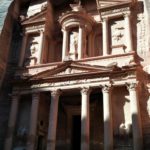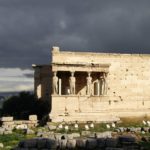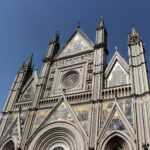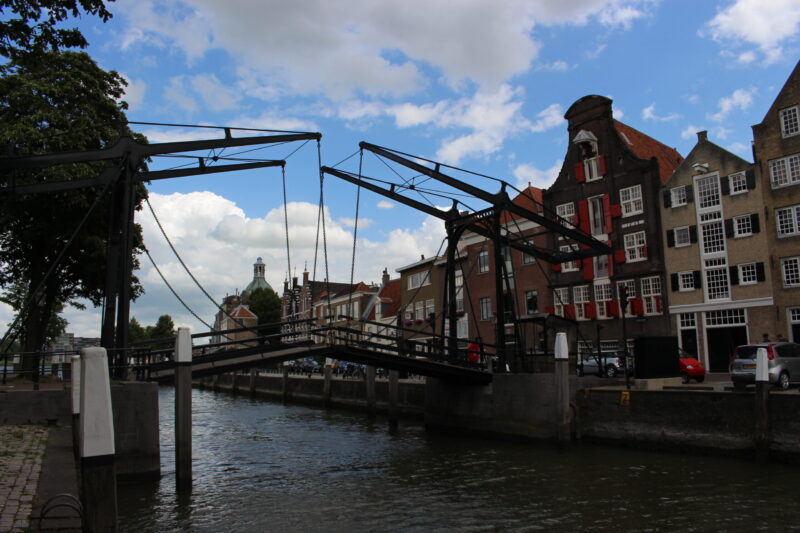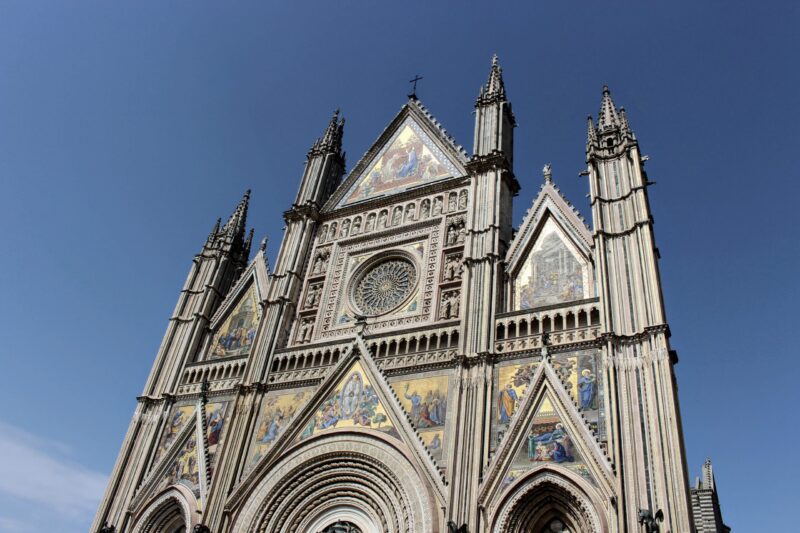We have been taught about the glory of Ancient Empires like Greece, Rome and others. We’ve seen the magnificent cities and buildings they built for the movies, like “Cleopatra”, “Gladiator” or “Troy”. Huge and impressive, filled up with rows of columns, lavishly decorated and imposing. A true “Wow!”…..And then you come to the actual ancient site and see heaps of stones and a few broken columns. The “Wow!” factor is gone…
That’s the case of most ancient sites, but there are exceptions. Luckily Paestum is one of them. It was a major ancient city of Magna Graecia (today’s Italy) situated south of Naples. Founded around 600 BC by Greek settlers from Sybaris and named Poseidonia at that time, it grew quickly into a major port and administrative center. It was then that the most famous temples of Poseidonia – namely the first and the second temple of Hera (also know as the temple of Poseydon) and the temple of Athena – were created.
However, it is not until the end of the fifth century BC that Poseidonia is mentioned, when, according to Strabo, the city was conquered by the neighbouring Lucanians. From the archaeological evidence, it appears that the two cultures, Greek and Oscan (Lucanians were Oscan), were able to thrive alongside one another. Many tomb paintings from that period show horses and horse-racing, an obsession of the Lucanian elites.
Ancient Romans
It became a Roman city in 273 BC in the aftermath of the Pyrrhic War in which the Graeco-Italian Poseidonians sided with king Pyrrhus of Epirus against the Roman Republic. You know about King Pyrrhus and his mythical Pyrrhic victories, don’t you? Well – the Poseidonians ended up on the losing side and became a part of the Roman Empire. The Romans changed the name of the city to Paestum, under which it is known till today.
Surprisingly, during the Carthaginian invasion of Italy by Hannibal sixty years later, the city remained faithful to Rome. As a result, Paestum was granted special favours such as the minting of its own coinage. This was a very rare privilege.
The city continued to prosper during the Roman imperial period and became a bishopric as the Roman Catholic Diocese of Pesto around 400 AD.
Decline
Unfortunately, it started to go into decline between the fourth and seventh centuries AD, and was abandoned during the middle Ages. The bishopric was suppressed in 1100. The decline and desertion were probably due to changes in local land drainage patterns. This lead to swampy malarial conditions. Raids by “Saracen” pirates and slavers also may have been a deciding factor. The city however was never destroyed as such.
Then, just like Petra, it became forgotten.

Surprisingly its ruins only came to wide notice again in the eighteenth century, following the rediscovery of the Roman cities of Pompeii and Herculaneum, and during the construction of a new coastal road south from Naples. The rediscovery of the three impressive Greek temples created huge interest throughout Europe.
You will probably be surprised, but Paestum played a role in modern times as well. It was here where on September 9, 1943, the U.S. 36th Infantry Division landed during the Allied invasion of Italy. German forces resisted the landings from the outset, They caused heavy fighting within and around the ancient town. Combat persisted around for nine days before the Germans withdrew to the north. Thankfully for the ancient ruins, the Allied forces set up their Red Cross first aid tents in them and they became “off limits” to bombing by both sides.
What to see
Certainly Paestum is a whole ancient town to discover, but the main thing that you see when you approach it are the three Ancient temples which are standing there like not much has happened in the last 2500 years. All of their columns are standing tall, even covered by parts of the roof. You really can feel that you are in a time capsule or that you are seeing a mirage. And yet you can walk into them and touch them even. These are the best preserved Greek Doric temples in the world, hence they are listed on the UNESCO World Heritage List.


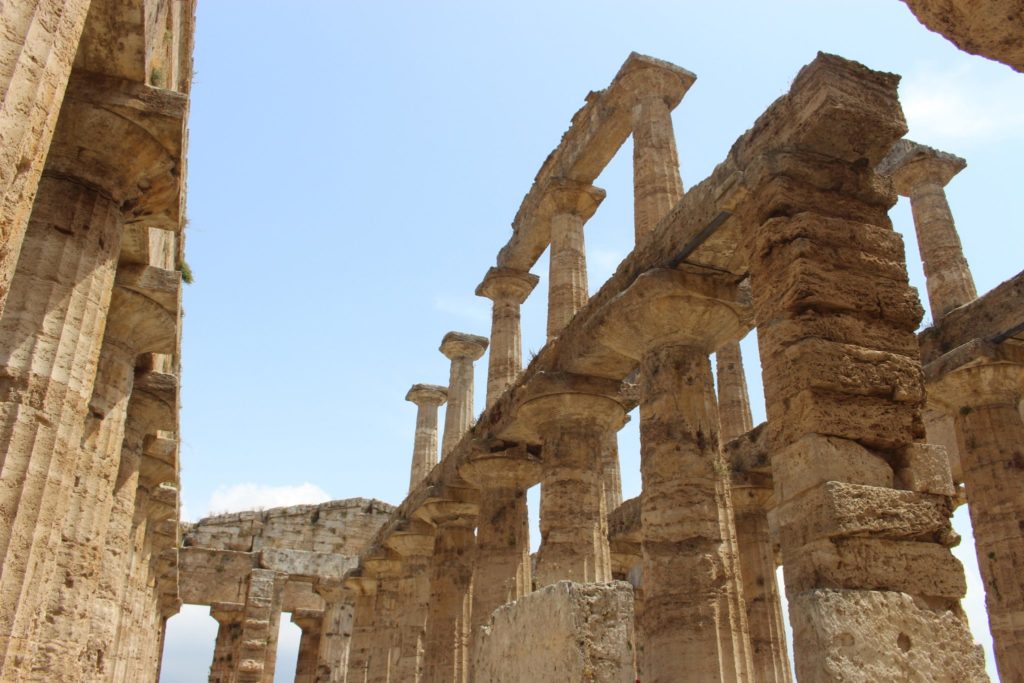

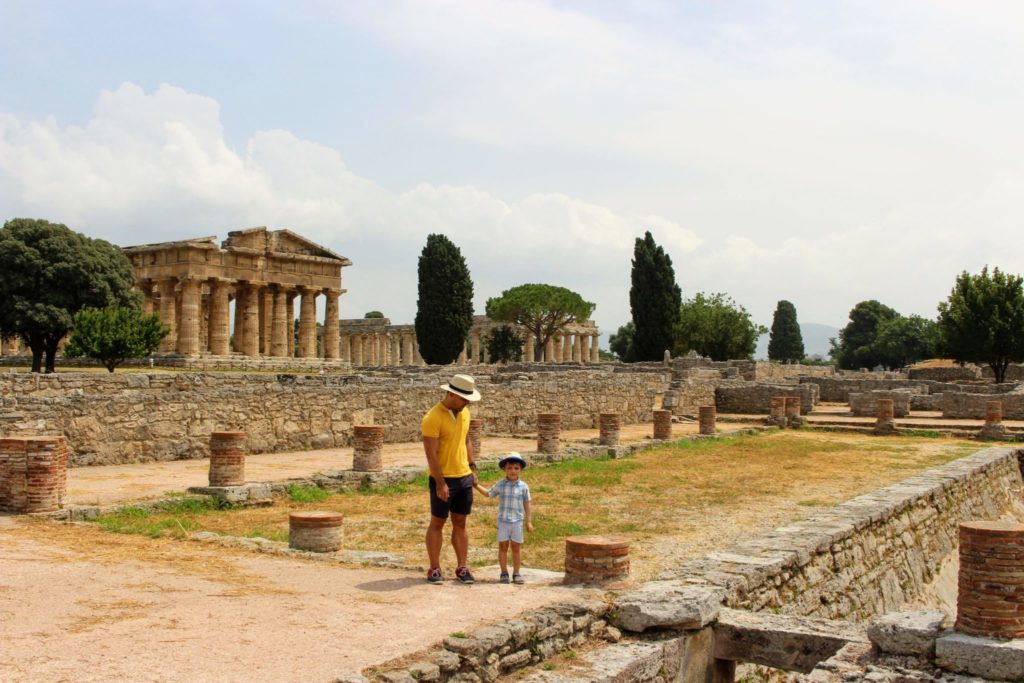
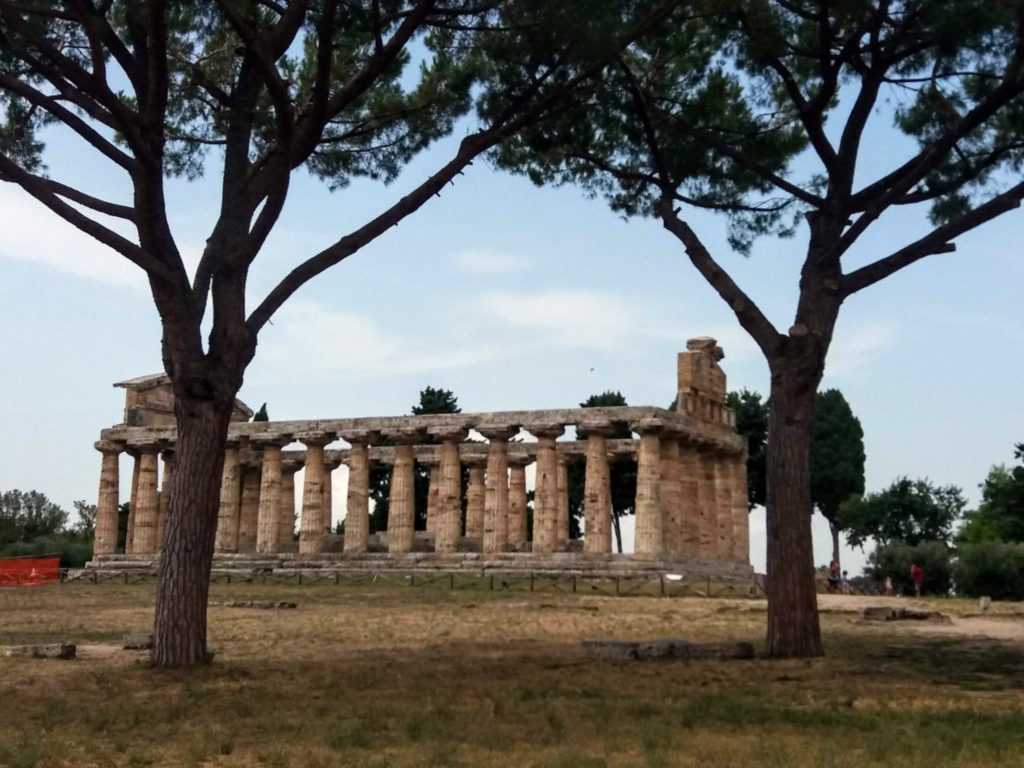

To the north-east of the forum is the amphitheatre. Unfortunately, nowadays, only the western half of it is visible. In 1930, a modern road was built across the site, burying the eastern half of the theatre. It is said by the local inhabitants that the civil engineer responsible was trailed. Then he was convicted and received a prison sentence for what was described as wanton destruction of a historic site.
What to do
On the other side of the infamous road, which cuts the amphitheatre ruins in half, lie souvenir shops, restaurants and cafes. Luckily they are less kitschy than in many touristic places. That’s why we found there a number of interesting things to bring home. After that we also had a decent lunch in the Museum’s restaurant which we topped up with magnificent fig – buffalo milk ice cream, a local speciality. It tasted heavenly and is certainly to be recommended.
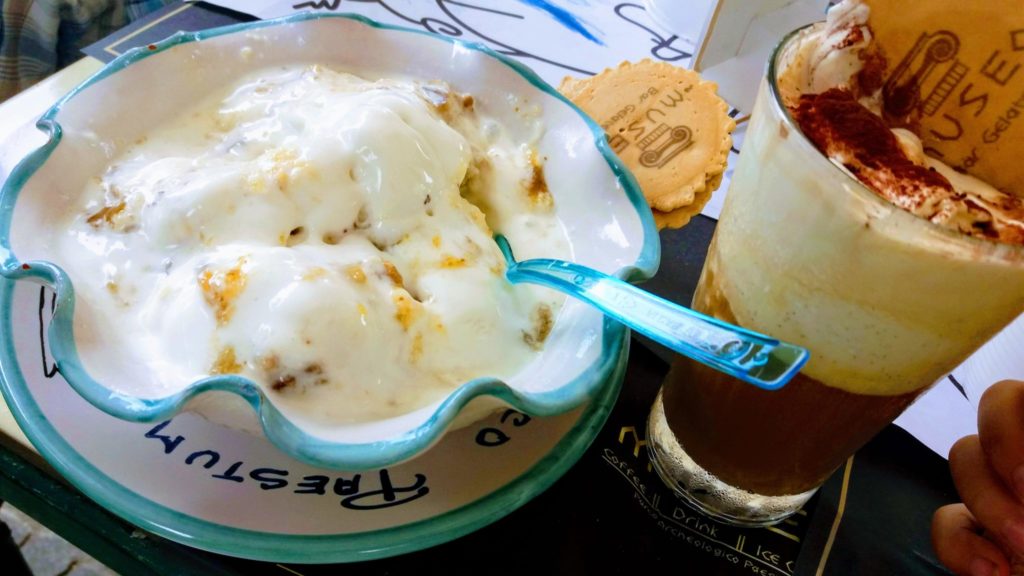
We found that a great addition to exploring the temples is the visit to the Paestum Archeological Museum. It de facto hosts all those elements of the ancient city which need a roof to protect from sunlight and rain. We found the beautifully painted sarcophagi the most interesting. Gosia fell in love with the painting of a diver and brought back home a tile with its reproduction. It is now proudly hanging in the restroom of our house 😉

Films
For those who love movies and games, it is worth noting that scenes in the 1963 film Jason and the Argonauts were filmed here. Notably when the Argonauts assist King Phineus (Patrick Troughton), who has been blinded and is tormented by harpies for his transgressions against the gods. As a result, in return for his advice on how to reach Colchis, the Argonauts render the harpies harmless by caging them.
The 2007 video game Medal of Honor: Airborne places the second mission in Paestum.
In our opinion
To sum up – Paestum is a great place to discover. If you are fed up with the crowds of Pompeii and you still want to see Ancient ruins, Paestum offers a good alternative. As we are history lovers, we didn’t have the either/or dilemma and visited both. Well – all three in fact, as we did go to Herculanum as well 🙂
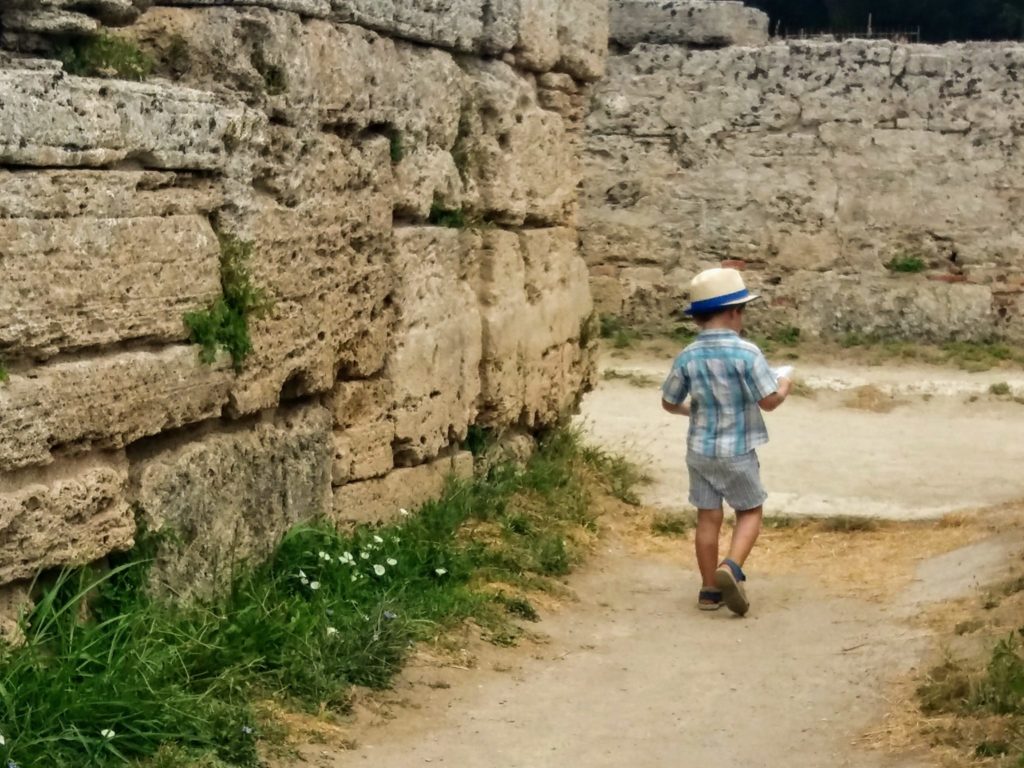
Johann von Goethe “Trip to Italy”
“Finally, uncertain whether we were advancing among cliffs or rubble, we ended up recognizing in some large, long quadrangular masses that we had already seen from a distance, the surviving temples and monuments and memories of an ancient, flourishing city.”
